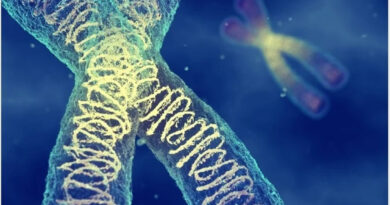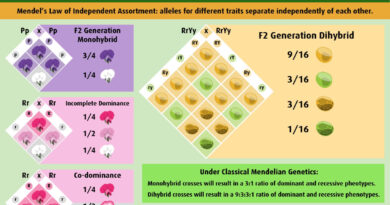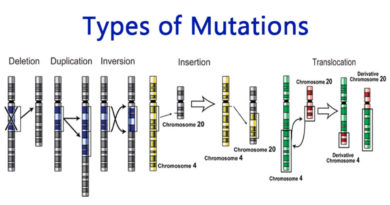Mendel’s Law of Independent Assortment and Linkage
Gregor Mendel, often regarded as the father of genetics, established the fundamental principles of heredity through his meticulous experiments with pea plants in the mid-19th century. His work laid the foundation for our understanding of how traits are inherited from one generation to the next. Among his key contributions are the Law of Independent Assortment and the concept of linkage, both of which play crucial roles in genetics.
Mendel’s Law of Independent Assortment
Mendel’s Law of Independent Assortment states that the alleles for different genes segregate, or assort, independently of one another during the formation of gametes. This principle is one of Mendel’s three laws of inheritance, along with the Law of Segregation and the Law of Dominance.
Explanation and Example
To understand the Law of Independent Assortment, consider a dihybrid cross involving two traits. For instance, Mendel studied the inheritance of seed shape (round or wrinkled) and seed color (yellow or green). When crossing plants that are heterozygous for both traits (RrYy), Mendel observed that the alleles for seed shape (R and r) segregated independently of the alleles for seed color (Y and y). As a result, the combinations of traits in the offspring followed a predictable 9:3:3:1 ratio:
– 9 round yellow (RRYY, RRYy, RrYY, RrYy)
– 3 round green (RRyy, Rryy)
– 3 wrinkled yellow (rrYY, rrYy)
– 1 wrinkled green (rryy)
This 9:3:3:1 phenotypic ratio demonstrates that the genes for seed shape and seed color assort independently, producing all possible combinations in the offspring.
Linkage
The concept of linkage challenges the idea of independent assortment. Linkage occurs when genes are located close to each other on the same chromosome and tend to be inherited together. Linked genes do not follow the principle of independent assortment because their proximity on the chromosome means they are less likely to be separated during meiosis.
Explanation and Example
To illustrate linkage, consider two genes located on the same chromosome. If these genes are close to each other, the alleles for these genes will likely be inherited together. For instance, if gene A and gene B are linked, and an organism has the genotype AB/ab, the gametes produced will more likely be AB and ab rather than the recombinant forms Ab and aB.
However, linkage is not absolute. During meiosis, homologous chromosomes can exchange segments in a process called crossing over. This can result in new combinations of alleles, known as recombinants. The frequency of recombination between two genes can provide information about the physical distance between them on the chromosome; the further apart two genes are, the more likely a crossover will occur between them.
Integration of Independent Assortment and Linkage
While Mendel’s Law of Independent Assortment applies to genes located on different chromosomes or far apart on the same chromosome, linkage describes the inheritance pattern of genes located close together on the same chromosome. The integration of these concepts allows for a more comprehensive understanding of genetic inheritance.
In modern genetics, the study of linkage and recombination frequencies has become a powerful tool for mapping genes on chromosomes. Geneticists use linkage analysis to identify the location of genes associated with diseases and traits, advancing our understanding of genetics and improving our ability to diagnose and treat genetic disorders.
Conclusion
Mendel’s Law of Independent Assortment and the concept of linkage are fundamental to the field of genetics. The Law of Independent Assortment explains how different genes independently segregate into gametes, while linkage describes how genes located close together on the same chromosome are often inherited together. Together, these principles provide a deeper understanding of the mechanisms underlying genetic inheritance, highlighting the complexity and elegance of biological processes. Mendel’s pioneering work continues to influence genetics research, guiding scientists in uncovering the genetic basis of traits and diseases.



